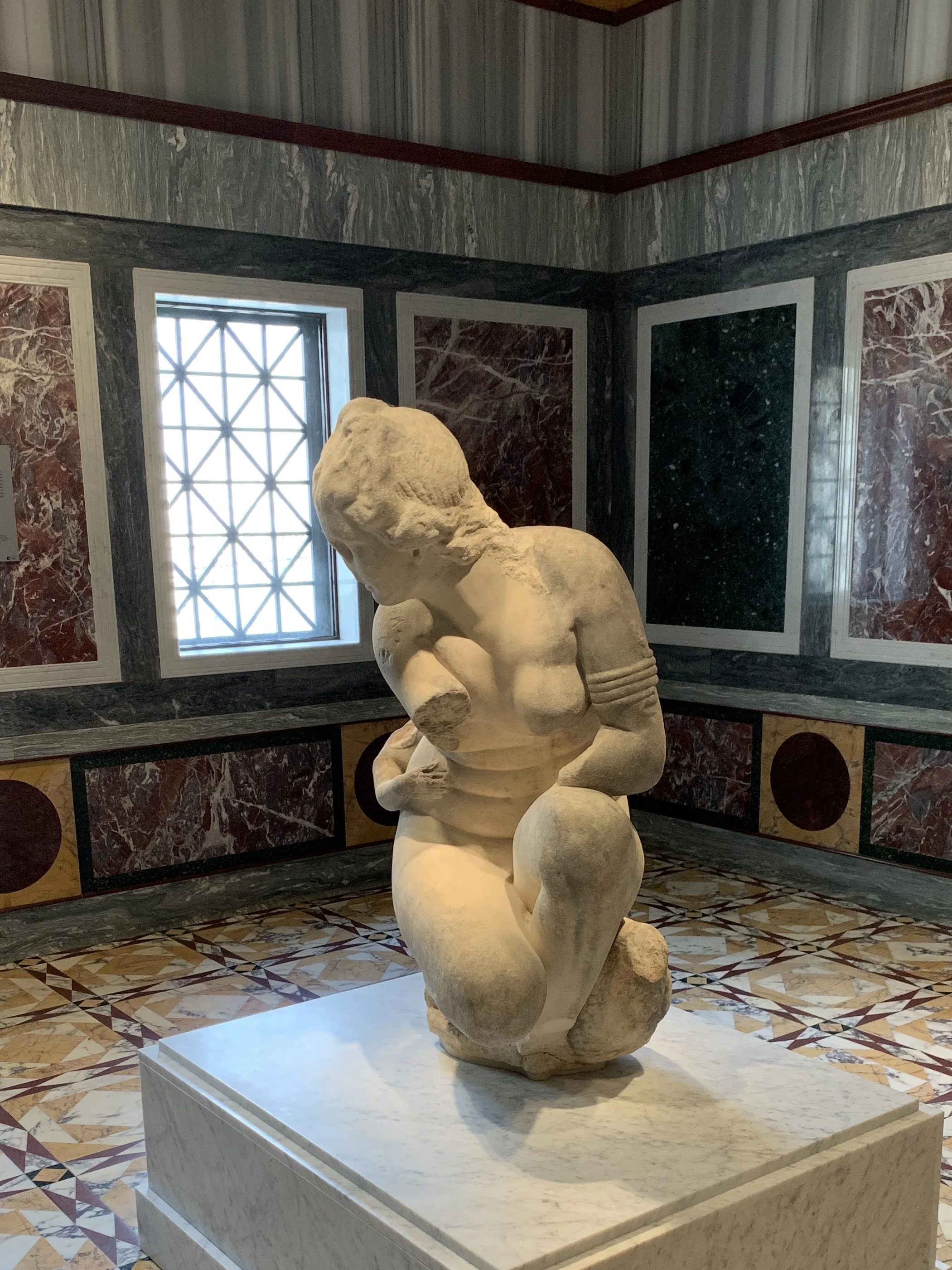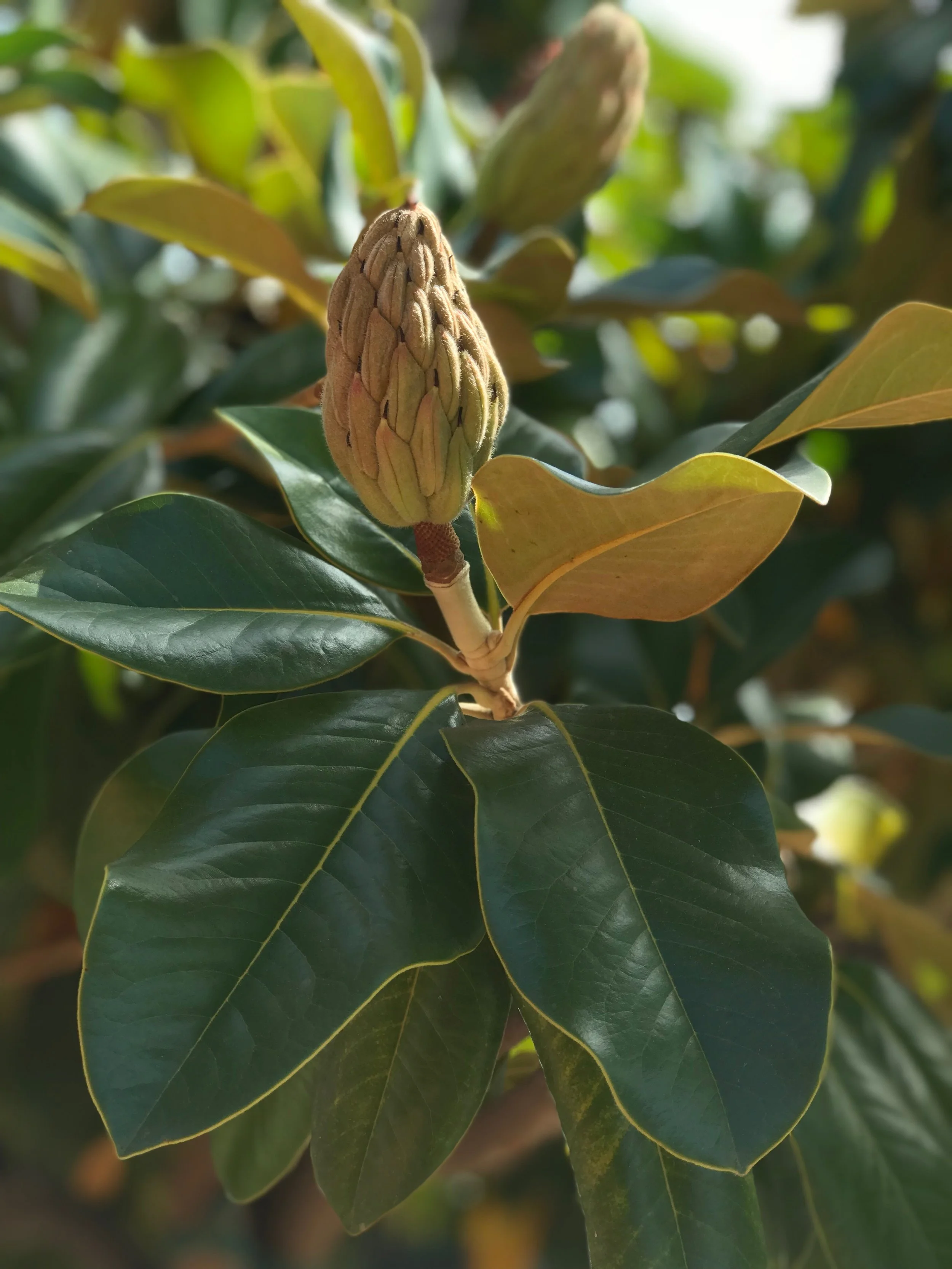A Villa by the Seaside
I paid my first visit to the Getty Villa last week. It’s one of those quintessential Los Angeles locales that I have meaning to see for a while. For one reason or another, maybe its location- with the intimidating right turn straight off Pacific Coast Highway- maybe the simple fear of disappointment, I’d avoided it for longer than I should have. The crowds can be overwhelming during the busiest periods and so I booked my entrance for the earliest slot of the morning. As I walked from the car park to the museum entrance I was transported into another world.
It’s said that John Paul Getty, in a seemingly generous moment, wanted the public to experience his collection in a setting that would bring the objects to life. For this reason he decided to build a dedicated museum on his Malibu property in the style of the Villa dei Papiri, a luxury seaside villa at Herculaneum. Buried by the eruption of Mount Vesuvius in AD 79, it was first rediscovered in the 1750s although excavations were still taking place in the early 2000s. It took its name from the unique library of over 1,000 papyrus scrolls that it housed. The Getty replica is beautifully maintained with a large staff tending to its every need as well as looking after all those who pay it a visit.
I wandered through the aromatic gardens, filled with colorful flowers and carefully tended Mediterranean herbs, taking pictures and gazing out to the Pacific, which twinkles on the horizon, before entering the outer peristyle of the villa. This is skillfully fashioned. A long and gleaming blue pool of water runs down the centre with small splashing fountains at regular intervals, surrounded by a shaded colonnade walkway on all sides. Bronze replicas of statues found at the Villa dei Papiri are dotted throughout the garden. If you look carefully you can spot a particularly charming Hermes, sporting elegantly carved winged sandals.
As you enter the atrium, visit the different galleries and proceed into the inner peristyle, after paying respects at the temple of Hercules, you begin to appreciate the vast scale of the Getty collection. There are over 44,000 pieces of Greek, Roman and Etruscan art. As I examined the different artifacts, I came upon several separate school parties pausing at various cases and listening to their guides. I found myself lingering at a sarcophagus with scenes from the life of Achilles while an Italian guide spoke with her students about death and its omnipresence in life. Several galleries later, I smiled as I passed a group of younger high school boys standing clustered around their teacher who held forth with great enthusiasm on the topic of the trials of Hercules. Our Classical heroes live on bright and bold with the continuation of such interactions between teacher and student.
A museum wins the battle to orchestrate my return if I discover items which resonate with me at a frequency that necessitates further communion. I found two such in the Getty Villa. A beautiful Roman statue of Venus accompanied by a dolphin, clearly referencing her birth from the sea, dating from AD 100-200, is housed in a long and narrow gallery. When walking around the rest of the room’s exhibition I realized that several smaller states of the muses were present and to my delight I found Clio, the muse of Ancient History who is our daughter’s name sake. The Roman statue dates from about AD 200 and pigment traces indicate that she was once brightly painted. As I stood gazing at Clio I made the silent aspiration that the shining achievements of the past be allowed to survive to illuminate our present.
In the center of a gallery further on, I came upon a crouching Venus with Cupid. Cast in marble, it dates from Rome AD 100-150. It was reworked in the 18th century by a well known Italian restorer but his additions, the goddesses’ arms, the head of the swan and the head and legs of Cupid were all removed before Getty added the statue to his collection. I took several pictures of the marble goddess and marveled at how, from every angle, one could see something different and fascinating about the composition of this sculpture. What particularly struck me, in addition to the beauty of the Venus herself was the manner in which the sculptor had fashioned Cupid’s arms. They cling, chubby with the innocence of youth, to his mother, wordlessly conveying the benediction of maternal protection. I left the gallery thinking deeply on the connection between mother and child, one of the most sacrosanct bonds of our common humanity.
As I drove away from the villa and re-entered the present tense I realized with no small degree of happiness that I had unwittingly added another dimension to life here in Los Angeles. Another corner where I might dwell quietly for a morning or an afternoon, dreaming amidst the layers and textures of a world filled with ancient goddesses and great heroes while life outside goes on, all around me.





